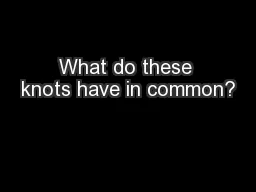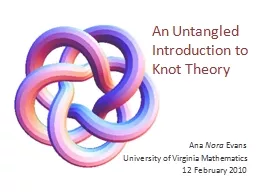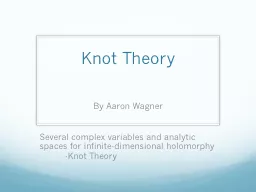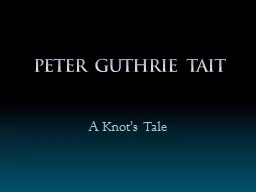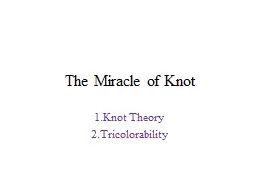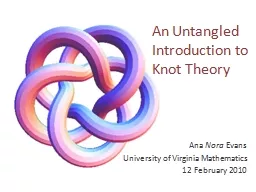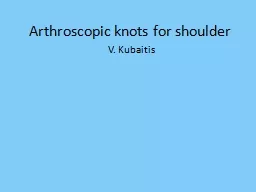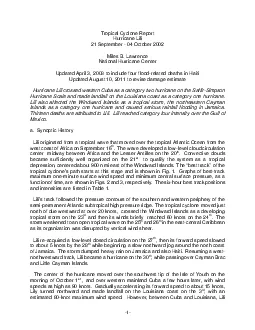PPT-What do these knots have in common?
Author : mitsue-stanley | Published Date : 2017-05-11
Hint Numbers can be categorized as this also Factorization of Knots and the Uniqueness of this Process By Lindsay Fox Comparison to Factorization of Integers Fundamental
Presentation Embed Code
Download Presentation
Download Presentation The PPT/PDF document "What do these knots have in common?" is the property of its rightful owner. Permission is granted to download and print the materials on this website for personal, non-commercial use only, and to display it on your personal computer provided you do not modify the materials and that you retain all copyright notices contained in the materials. By downloading content from our website, you accept the terms of this agreement.
What do these knots have in common?: Transcript
Download Rules Of Document
"What do these knots have in common?"The content belongs to its owner. You may download and print it for personal use, without modification, and keep all copyright notices. By downloading, you agree to these terms.
Related Documents

